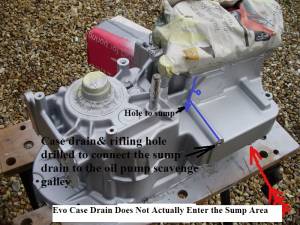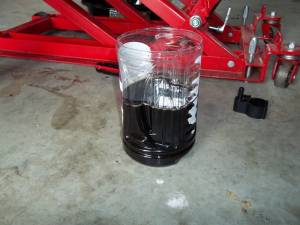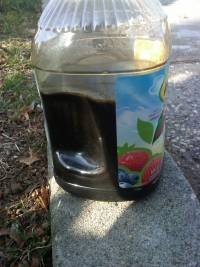Table of Contents
This is an old revision of the document!
REF: Oiling & Lubrication - Sub-01A
Performing a Scavenging Oil Change
When draining oil from the oil tank, all of the oil will not return to the tank.
There is a certain amount that will stay in the engine and mix with the new oil after an oil regular oil change.
When doing an oil change per the FSM;
There is oil left in the pump, in the feed hose to pump and filter, in the passages after the filter, in the sump that wasn't pumped out and in the return line to the tank. 1)
By scavenging the system you get the cumulative total of the oil forced out of the engine.
At most there's a tiny bit left in the return hose where you remove or pinch it off and the tank……maybe an ounce.
Bottom line, there can be 20-24 ounces of dirty oil left by doing a regular oil change.
The difference in the oil's clean appearance by scavenging vs. regular change is very noticeable.
However, a normal oil change won't remove all of the oil from the engine.
This will not drain oil from the feed / return lines to the engine.
The Evo case drain will not drain the sump as the drain hole doesn't enter it.
Therefore, there will be a certain amount of used / old oil that will stay in the system and will mix with the new clean oil.
This will also dilute the new oil to an extent.
| The Evo case drain doesn't actually enter the sump 2) | This is how much used oil that could be hiding in the sump / lines (24oz in this case). 3) |
 |  |
| 1.3 quarts in this case. 4) |
 |
Some would prefer that all of the used oil be removed during an oil change.
Below are some ideas on how to accomplish this.
Scavenge by Removing the Oil Return Hose
The easiest way would be to disconnect the return oil line from the tank to and spin the engine / oil pump and let the remaining used oil collect into a container.
- Drain the old oil from the tank using the drain hose as usual. 5)
- Install the plug on the end of the hose and add two quarts of your favorite oil to the tank.
- Remove the return line from the oil tank (be careful not to break the connectors on plastic oil tanks).
- Remove the spark plug wires and close the gas petcock.
- Secure the return line so the oil goes in a waste container (be sure you can see the oil pouring out of it).
- Crank the bike with the starter until you see clean new oil coming out of the hose end (average of about a quart).
- Change your oil filter and turn the motor over a couple revs and reinstall the return line to the oil tank using a new clamp (spring or worm clamp as you prefer).
- Reinstall the plugs wires, open the gas petcock and start the bike for about 20 seconds to get oil circulating.
- Fill the oil tank to bottom line of the dip stick and go for a little ride to fully warm the engine.
- Then check the oil dip stick to see if the oil is between the two oil marks.
- The oil line should be between the two marks on the stick. Add oil if necessary.
